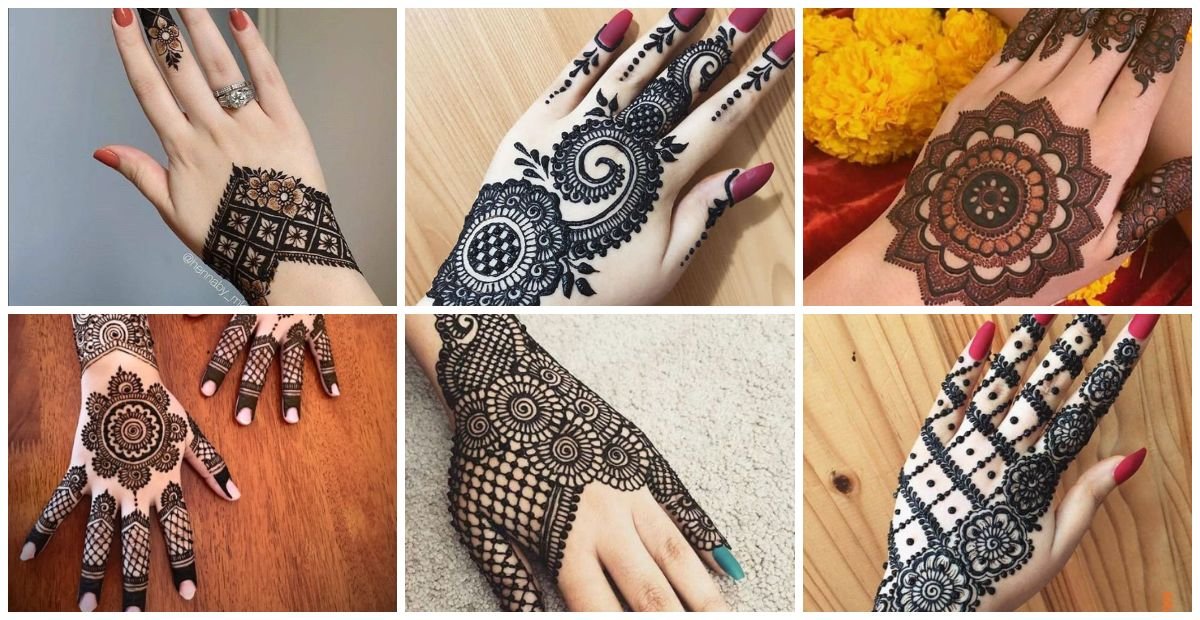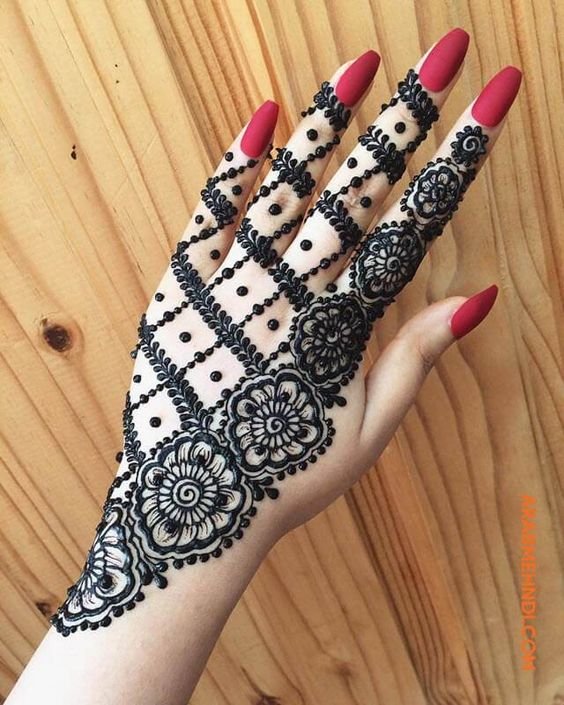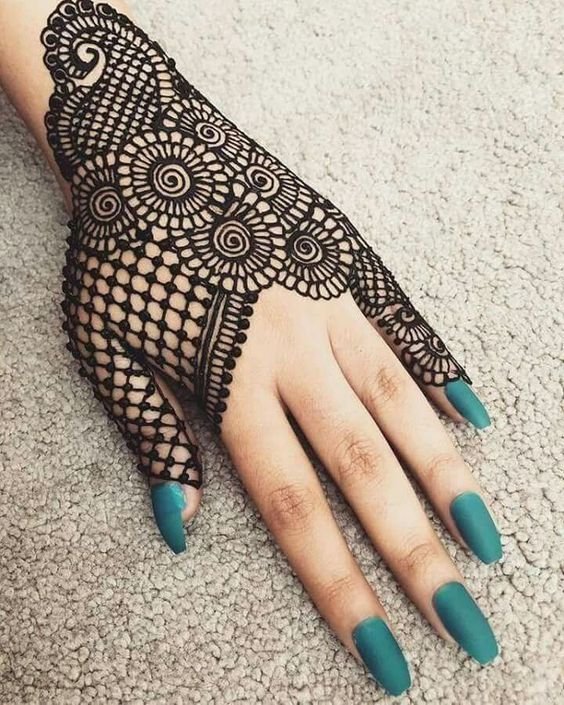Latest trending mehndi designs, also known as henna, holds a significant place in various cultures around the world, especially in South Asia, the Middle East, and Africa. From traditional patterns to contemporary styles, mehndi designs have evolved over the years, reflecting changing trends and preferences. Let’s delve into the latest trending mehndi designs that are captivating hearts and hands globally.
Latest Trending Mehndi Designs

Introduction to Mehndi Designs
Mehndi, derived from the leaves of the henna plant, has been used for centuries as a form of body art and adornment. It carries cultural and religious significance, symbolizing joy, celebration, and auspicious occasions. Mehndi application is not just a form of embellishment but a ritual deeply embedded in various traditions.

Evolution of Mehndi Designs
Traditional Mehndi Designs
Traditional mehndi designs are characterized by intricate patterns, depicting motifs like paisleys, flowers, and peacocks. These designs have been passed down through generations, with each region having its distinct style and symbolism.
Contemporary Mehndi Trends
In recent years, mehndi designs have witnessed a shift towards modernity. Contemporary trends embrace minimalism, geometric patterns, and fusion of cultural elements. Mehndi artists are experimenting with innovative styles, catering to diverse preferences and occasions.
Latest Mehndi Design Trends
Minimalist Mehndi Designs
Minimalist mehndi designs focus on simplicity and elegance. They feature clean lines, geometric shapes, and negative space, offering a refreshing alternative to elaborate patterns. Minimalist mehndi is popular among individuals seeking subtle yet stylish adornment.
Floral Mehndi Patterns
Floral mehndi designs remain timeless classics, cherished for their beauty and grace. From delicate roses to intricate vines, floral motifs add a feminine touch to mehndi art. They are favored by brides and bridesmaids for their romantic appeal.
Arabic Mehndi Designs
Arabic mehndi designs are characterized by bold outlines and intricate detailing. They often feature large floral motifs, paisleys, and geometric patterns, creating a striking contrast against the skin. Arabic mehndi is renowned for its dramatic effect and versatility.
Bridal Mehndi Designs
Bridal mehndi designs are elaborate and ornate, symbolizing joy and prosperity. They typically cover the hands and feet, showcasing intricate patterns and motifs. Bridal mehndi artists incorporate personalized elements, such as initials or wedding motifs, to commemorate the occasion.
Glitter Mehndi Designs
Glitter mehndi designs add a touch of glamour and sparkle to traditional henna art. They involve the use of adhesive glitter and embellishments to enhance mehndi patterns. Glitter mehndi is popular for festive occasions and celebrations.
Popular Mehndi Styles Across Cultures
Mehndi designs vary across different cultures, each boasting its unique aesthetics and symbolism.
Indian Mehndi Designs
Indian mehndi designs are characterized by intricate patterns that cover the entire hand and foot. They often feature peacocks, elephants, and other traditional motifs, symbolizing love, prosperity, and fertility.
Pakistani Mehndi Designs
Pakistani mehndi designs are known for their fine detailing and symmetry. They typically include intricate patterns that extend from the fingertips to the forearm, creating a mesmerizing effect. Pakistani brides adorn their hands and feet with elaborate mehndi designs during wedding ceremonies.
Arabic Mehndi Designs
Arabic mehndi designs originated in the Middle East and are renowned for their bold and expressive style. They feature large floral motifs, swirls, and geometric patterns, often extending from the fingertips to the elbows. Arabic mehndi is popular for its intricate yet striking appearance.
African Mehndi Designs
African mehndi designs encompass a diverse range of styles, reflecting the continent’s rich cultural heritage. They often feature bold geometric patterns, tribal motifs, and symbols inspired by nature. African mehndi is characterized by its simplicity and symbolism.
Factors Influencing Mehndi Design Trends
The popularity of mehndi designs is influenced by various factors, including social media, celebrity endorsements, and cultural events.
Social Media Influence
Social media platforms like Instagram and Pinterest play a significant role in shaping mehndi design trends. Mehndi artists and enthusiasts share photos and videos of their creations, inspiring others with new ideas and styles.
Celebrity Endorsements
Celebrities often showcase elaborate mehndi designs during weddings, festivals, and red carpet events, influencing mainstream fashion trends. Their glamorous mehndi looks set the stage for emerging styles and techniques.
Cultural Events and Festivals
Cultural events and festivals serve as platforms for showcasing traditional mehndi designs and rituals. Mehndi artists and enthusiasts gather to celebrate cultural heritage, exchanging ideas and techniques.
Tips for Choosing the Right Mehndi Design
Choosing the perfect mehndi design involves considering various factors, such as the occasion, outfit, personal preferences, and skin tone.
Considering Occasion and Outfit
The occasion and outfit play a crucial role in determining the appropriate mehndi design. For weddings and festive celebrations, elaborate bridal mehndi designs are preferred, while minimalist designs may be suitable for casual events.
Personal Preferences
Individual preferences vary when it comes to mehndi designs. Some may prefer traditional motifs and patterns, while others may opt for contemporary styles. It’s essential to choose a design that resonates with your personal style and aesthetics.
Skin Tone and Texture
The skin tone and texture influence the appearance of mehndi designs. Darker skin tones tend to absorb mehndi pigment more effectively, resulting in deeper and richer colors. It’s advisable to choose mehndi designs that complement your skin tone for optimal results.
DIY Mehndi Application Tips
While professional mehndi artists offer expert services, many individuals prefer DIY mehndi application for its convenience and creativity.
Preparing Mehndi Paste
Preparing mehndi paste involves mixing henna powder with lemon juice, sugar, and essential oils to achieve a smooth consistency. Allow the paste to rest for a few hours to activate the dye release before application.
Applying Mehndi with Precision
Mehndi application requires precision and patience. Use a fine-tipped applicator or cone to create intricate designs with ease. Practice on paper or cardboard before applying mehndi on your skin to refine your technique.
Enhancing Mehndi Color and Longevity
To enhance mehndi color and longevity, follow these tips:
- Apply a sugar and lemon mixture on dried mehndi to seal the color.
- Keep the mehndi paste moist by spraying it with a mixture of sugar and water.
- Avoid washing the mehndi area for at least 24 hours to allow the color to develop fully.
Professional Mehndi Artists vs. DIY
Choosing between a professional mehndi artist and DIY application depends on various factors, including time, budget, and expertise.
Pros and Cons of Hiring a Professional
Professional mehndi artists offer expertise and precision, ensuring flawless designs and vibrant colors. However, their services may be costly, and availability may be limited, especially during peak seasons.
Benefits and Challenges of DIY Mehndi Application
DIY mehndi application allows for creativity and customization, empowering individuals to design their patterns and motifs. However, it requires practice and patience to achieve professional-looking results, and mistakes can be challenging to rectify.
Maintaining Mehndi Design After Application
Maintaining mehndi design after application is essential to preserve its color and longevity.
Avoiding Water Contact
Avoid exposure to water for at least 24 hours after mehndi application, as water can fade the color and blur the design. Protect your hands and feet from moisture by wearing gloves or plastic wrap when necessary.
Moisturizing to Preserve Color
Moisturize the mehndi area regularly with natural oils or shea butter to keep the skin hydrated and prevent the mehndi from cracking or fading prematurely. Avoid harsh chemicals and exfoliants that can strip away the mehndi pigment.
Protecting Design from Friction
Be mindful of activities that may cause friction or rubbing against the mehndi design, as this can smudge or distort the patterns. Avoid wearing tight clothing or accessories that may scrape against the mehndi area.
Cultural Significance of Mehndi Designs
Mehndi designs hold cultural significance in various traditions and rituals, symbolizing love, prosperity, and auspicious beginnings.
Symbolism in Mehndi Patterns
Mehndi patterns often incorporate symbolic elements that convey specific meanings. For example, peacock motifs symbolize beauty and grace, while paisley motifs represent fertility and abundance.
Mehndi Rituals in Weddings and Festivals
Mehndi rituals are integral parts of weddings and festivals in many cultures. Brides adorn their hands and feet with intricate mehndi designs as a symbol of love and fertility, while festive celebrations feature mehndi application as a form of adornment and celebration.
Future Trends in Mehndi Designs
As mehndi continues to evolve, we can expect to see innovative trends and techniques that blend tradition with modernity.
Fusion of Traditional and Modern Styles
Future mehndi designs may incorporate elements of traditional motifs with contemporary aesthetics, catering to changing preferences and global influences.
Technological Advancements in Mehndi Application
Advancements in technology may revolutionize mehndi application techniques, making it easier and more convenient for both professionals and enthusiasts. From precision applicators to digital design tools, technology has the potential to enhance the artistry and accessibility of mehndi designs.
Conclusion
Mehndi designs have transcended generations and cultures, captivating hearts and hands with their timeless beauty and symbolism. From traditional patterns to contemporary trends, mehndi continues to evolve, reflecting changing tastes and preferences. Whether adorned for weddings, festivals, or everyday adornment, mehndi remains a cherished form of self-expression and celebration.
FAQs (Frequently Asked Questions)
- How long does mehndi take to dry?
- Mehndi typically takes 2-6 hours to dry completely, depending on the thickness of the paste and environmental conditions.
- How long does mehndi last?
- Mehndi can last anywhere from 1-3 weeks, depending on factors such as skin type, application technique, and maintenance.
- Can I shower with mehndi on?
- It’s best to avoid showering or exposing the mehndi area to water for at least 24 hours after application to allow the color to develop fully.
- How can I remove mehndi stains quickly?
- To remove mehndi stains quickly, you can rub lemon juice or a mixture of baking soda and water on the stained area and rinse with warm water.
- Can I apply mehndi on sensitive skin?
- While mehndi is generally safe for most skin types, individuals with sensitive skin may experience irritation or allergic reactions. It’s advisable to perform a patch test before applying mehndi on sensitive areas.


















